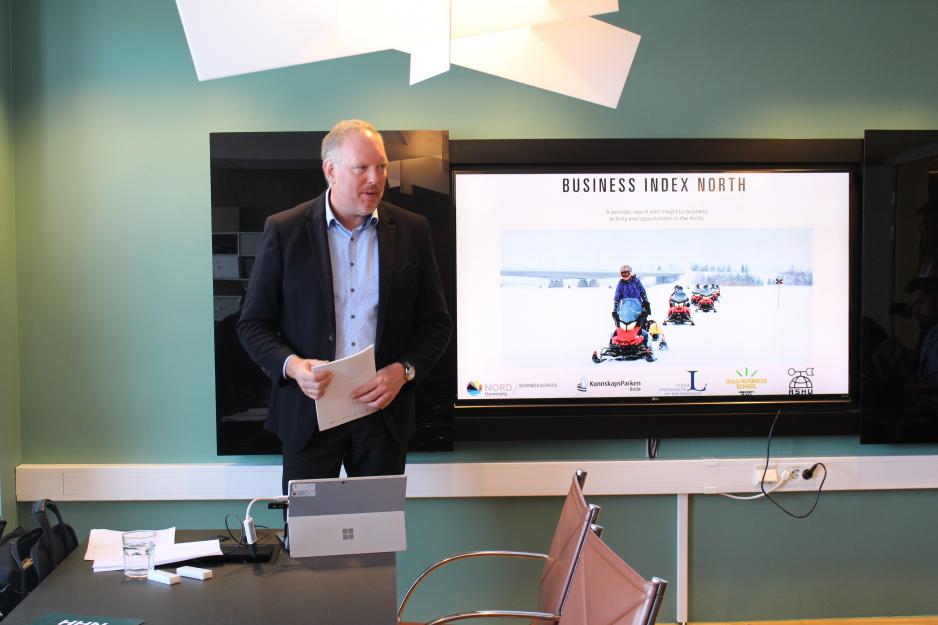Business Index North: Declining Population and Low Education Levels

The population in the North is declining, and the population grows increasingly old. Along with lower levels of education, this constitutes significant challenges.
Business Index North (BIN) analyses eight northern regions in Norway, Sweden and Finland as well as two regions (Murmansk and Arkhangelsk) in northern Russia. BIN analyses the socio-economic development in the region and uncovers obstacles and opportunities that characterize development in the region.
Worrying about population figures
The second edition of BIN, which was published at Nord University today, once gain shows that the population figures are the main reason of concern in the High North. The population in the region, including the Murmansk region, has decreased by 3.7 percent in the decade from 2007 to 2016.
The report further shows that the population is aging strongly. The 65+ age group has increased by more than 13 percent while the age group 0-19 years has been reduced by 7.5 percent, the age group 20 to 39 has decreased by 7 percent whereas the 40-65 age group has decreased by nearly 4 percent during the same period.
Education levels
Project coordinatorAndrey Mineev at Nord University Business School points out that education levels vary significantly between the BIN area and the respective national averages.
When it comes to higher education, the group Men 20-59 years is five percent lower than that of the national average of the Nordic countries, whereas the same figure for women is three percent.
As far as income goes, the BIN report shows that disposable income is lower across all BIN regions, except Murmansk, than the respective national averages.
Work and business life
The report shows some improvement when it comes to employment rates in the Bin areas, however, it is nevertheless characterized by a loss of jobs in mining, farming, forestry and fisheries, and by increased employment in health and social services, property, research and development, tourism and construction.
Good broadband connections
Business Index North argues that broadband connections are pretty good in the Nordic countries, where some 95 percent of households have access to it. In the Russian regions, the figure is 75 percent.
However, the fact that the northern regions do not have direct broadband connection via sea cable to the rest of Europe or North America is considered a weakness.
Several recommendations
Education, work, living conditions, quality of life and infrastructure, including transportation and digitalization – these are the keys to stabilize and preferably increase population figures in the North.
BIN recommends several initiatives that should be coordinated among the countries in the region, in particular when it comes to education.
The needs and opportunities of businesses and work life when it comes to health, tourism and construction should be analyzed further. Furthermore, stimulation of innovation potentials in the region should be continued, as should the required national support for companies in the North – in particular in the financing sector.
Northern Sea Route
When it comes to transport, BIN stresses that the opportunities that arise through increased use of the Northern Sea Route (north of Russia, leading between Europe and Asia) must be watched closely and stimulated.
The whole infrastructure of the region should be seen as a whole in this context, including Finland’s work on the Arctic Railway from Rovaniemi to Kirkenes, as well as the digital infrastructure in the region.
An information tool
- The goal of Business Index North is to create a knowledge-based and systematic information tool for companies, academics, governments, authorities and media in the Arctic countries, says Dean Erlend Bullvåg of Nord University Business School, who chairs the BIN Board of Directors.
The report contains data about living conditions in Norway, Sweden, Finland and the Murmansk and Arkhangelsk regions in Russia.
The Index is split into themed chapters; Population by age, education/gender, life expectancy, income and employment, growth, innovation, business, shipping, broadband development and recommendations for the future.
Les artikkelen på norsk
Alexandra Middleton, Assistant Professor, University of Oulu,
Anders Hersinger, Professor, Luleå University of Technology
Andrey Bryksenkov, Deputy Director of representative office Russian State, Hydrometeorological University in Moscow
Andrey Mineev, Researcher, High North Center at Nord University Business School
Bjørn Gunnarsson, Associate Professor, Nord University Business School
Elena Dybtsyna, Associate Professor, Nord University Business School
Erlend Bullvåg, Dean, Nord University Business School
Jaakko Simonen, Professor, University of Oulu
Ossi Pesämaa, Associate Professor, Luleå University of Technology
Peter Dahlin, Assistant professor, School of Business, Society and Engineering, Mälardalen University
Sergey Balmasov, Head of the NSR Information Office in Murmansk, Center for High North Logistics
Sissel Ovesen, Senior Advisor, Bodø Science Park
